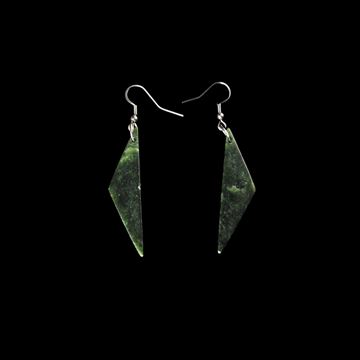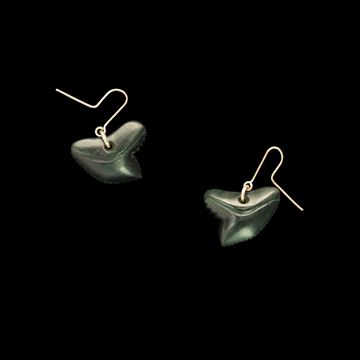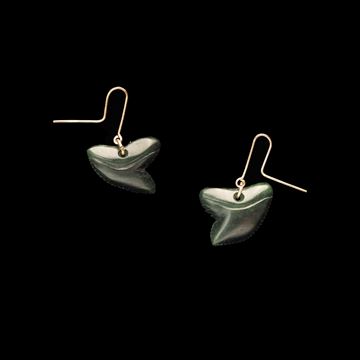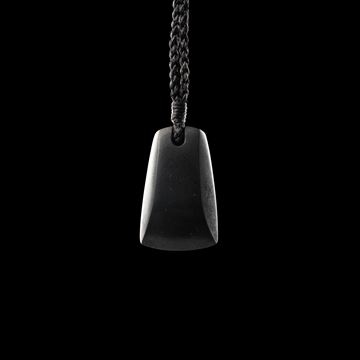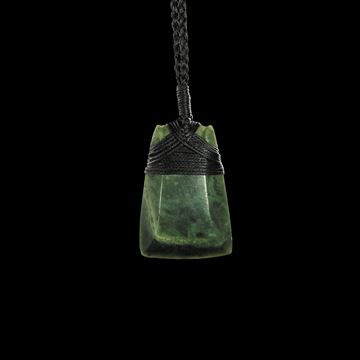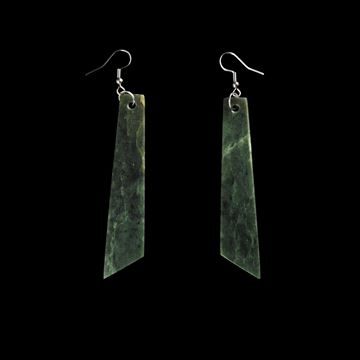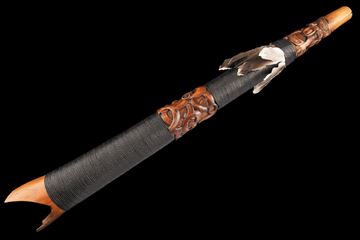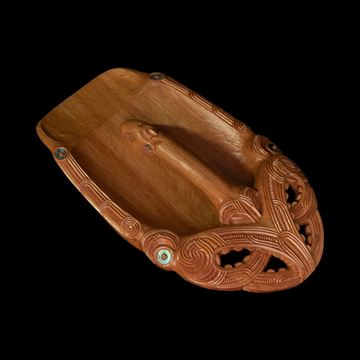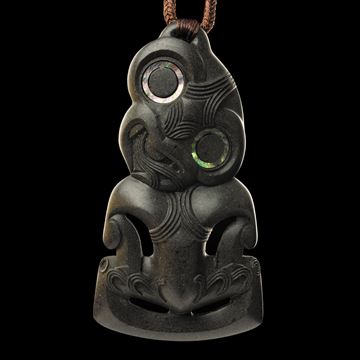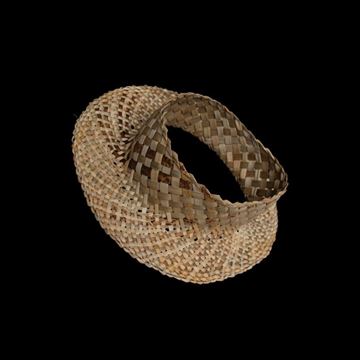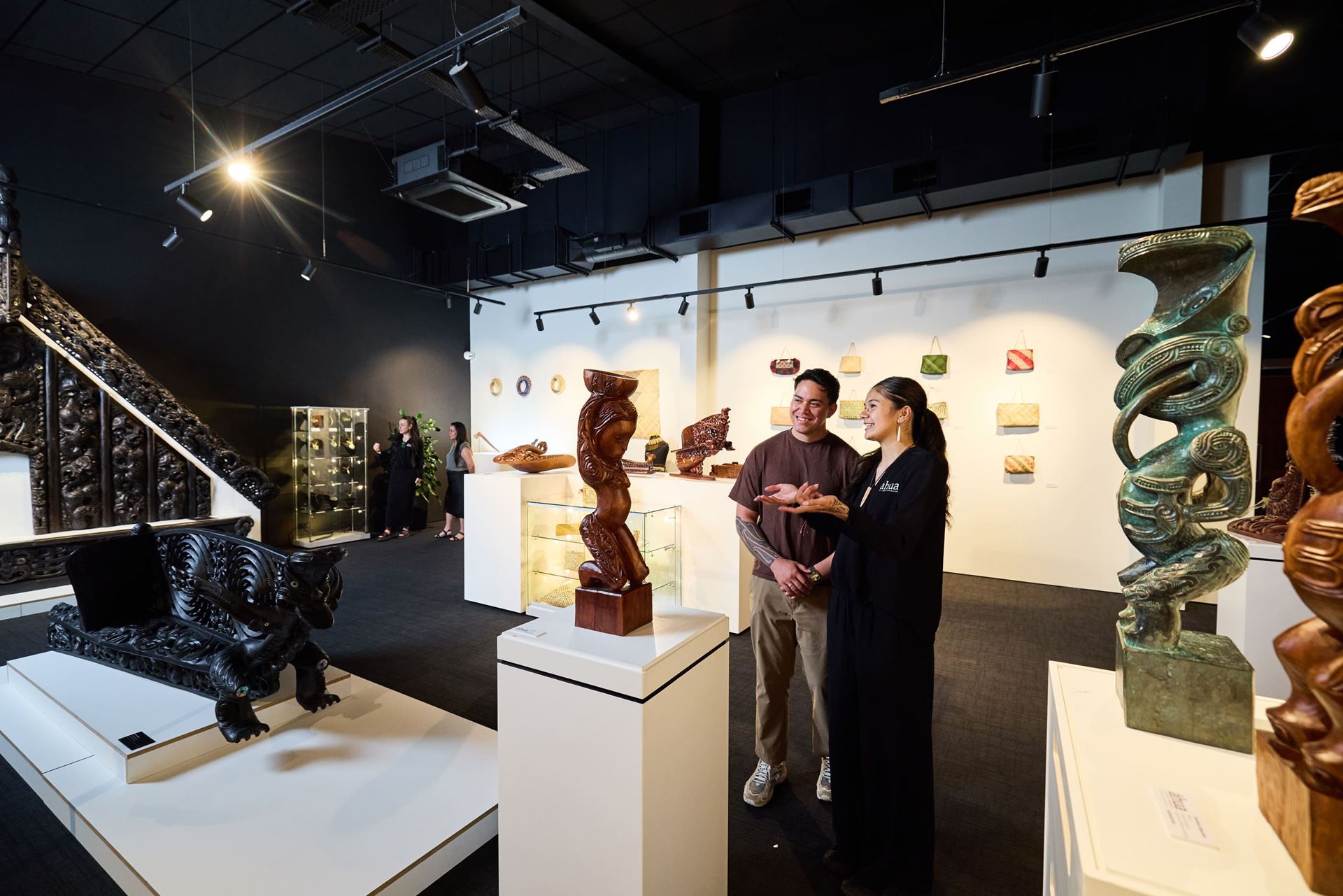
Āhua Gallery
Select Subcategory
Tiger Shark Earrings - 4543IA
Shark teeth were highly sought after to wear as a symbol of prestige for personal adornment. They were reflective of the mana of the shark itself.
Material: Pounamu (Kawakawa)
Measurements: 12mm x 25mm x 6mm
$390.00
Tiger Shark Earrings - 4544IA
Shark teeth were highly sought after to wear as a symbol of prestige for personal adornment. They were reflective of the mana of the shark itself.
Material: Pounamu (Kawakawa)
Measurements: 12mm x 25mm x 6mm
$390.00
Toki - 5522IA
The toki pendent is based on the form of the carving chisel used in whakairo (Māori carving).
Material: Punakitere
Measurements: 38mm x 24mm x 7mm
$320.00
Toki - 6840HW
The toki pendent is based on the form of the carving chisel used in whakairo (Māori carving).
Material: Pounamu (Kawakawa)
Measurements: 45mm x 30mm
$490.00
Toki Earrings - 6223RH
Toki earrings (or drop earrings) are designed to suspend from the bottom of the earlobes. The length varies from a centimetre or two, all the way to brushing the wearer's shoulders.
Material: Pounamu (Kawakawa)
Measurements: 68mm x 15mm x 2mm
$390.00
Toki Earrings - 6229RH
Toki earrings (or drop earrings) are designed to suspend from the bottom of the earlobes. The length varies from a centimetre or two, all the way to brushing the wearer's shoulders.
Material: Pounamu (Kawakawa)
Measurements: 71mm x 15mm x 2mm
$390.00
Pūkaea - 4798TJ
The pūkaea was the largest of the Māori trumpets, ranging in size from one metre (3.2ft) to over two meters (3.4ft) in length. They were made in two pieces and bound together with the roots of the kiekie (climber). Many pūkaea were carved and they often belonged to the chief of a tribe. They were typically used to call the tribe together.
Material: Matai
Measurements: 600mm x 70mm x 60mm
$5,900.00
Tīheru (Bailer) - 4793GM
Often the bailer (tatā, tīheru or tā wai) was beautifully carved and some were given a name. In canoe traditions, tribal members still name the bailers used on the original voyaging canoes from Polynesia.
Material: Tōtara
Measurements: 180mm x 300mm x 50mm
$9,900.00
Hei Tiki - 6177KH
Hei tiki are the best known of all Māori adornments. Tiki are symbols of fertility that depict a new-born child. They are often family heirlooms bearing personal names and embodying their wearers lineage. As with most Māori personal adornments, hei tiki are often passed down generationally.
Material: Onewa (Graywacke)
Measurements: 183mm x 101mm x 25mm
$3,500.00
Pōtae - 5142ML
This Pōtae is a contemporary hat woven with traditional Māori weaving methods.
Material: Harakeke
Circumference: 21 inches
$250.00
Pōtae - 5143ML
This Pōtae is a contemporary hat woven with traditional Māori weaving methods.
Material: Harakeke
Circumference: 21.5 inches
$250.00
Recently viewed products

